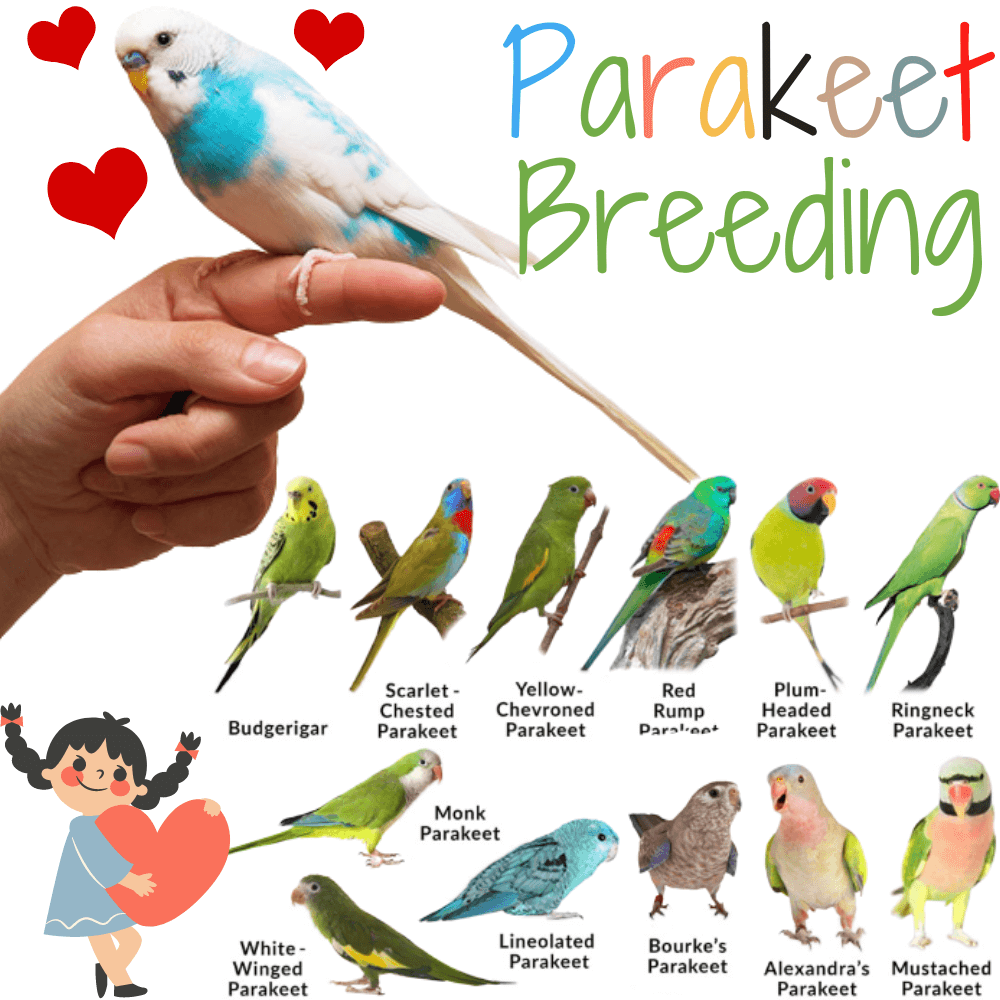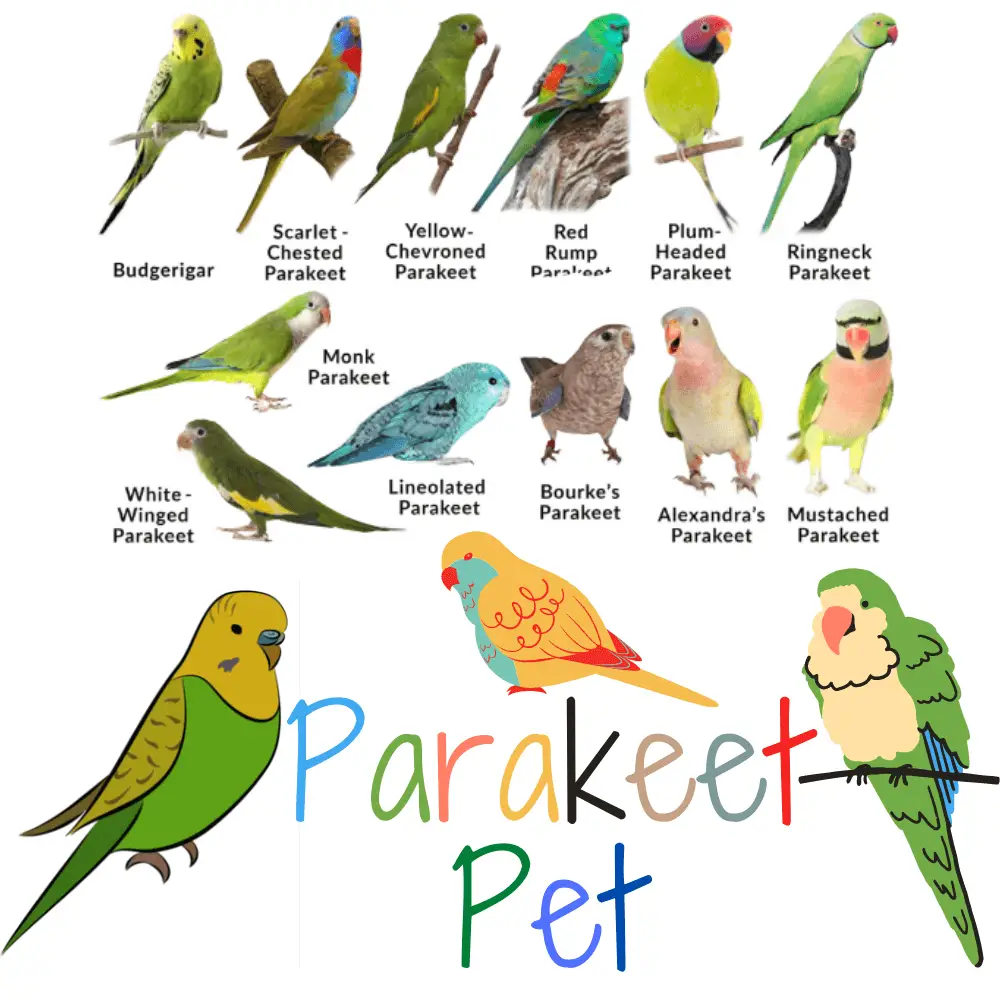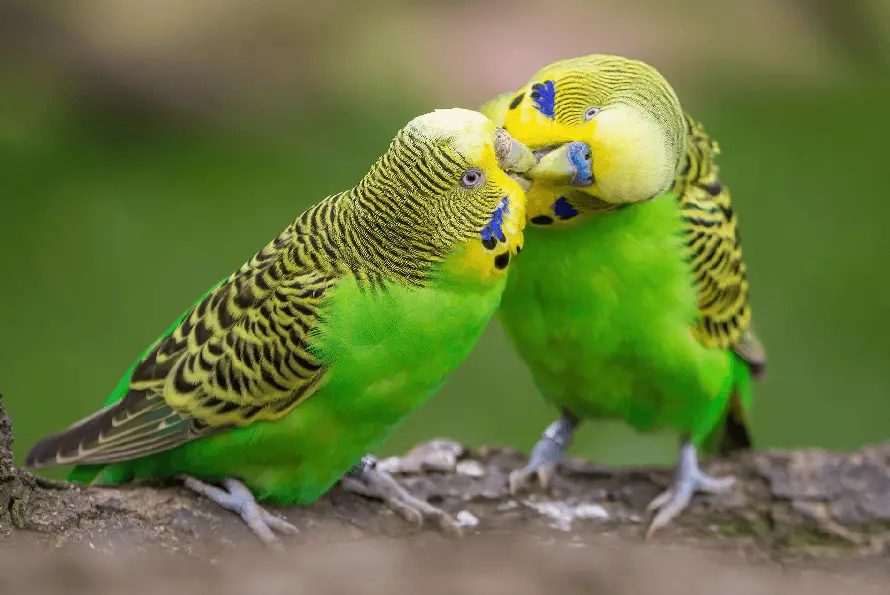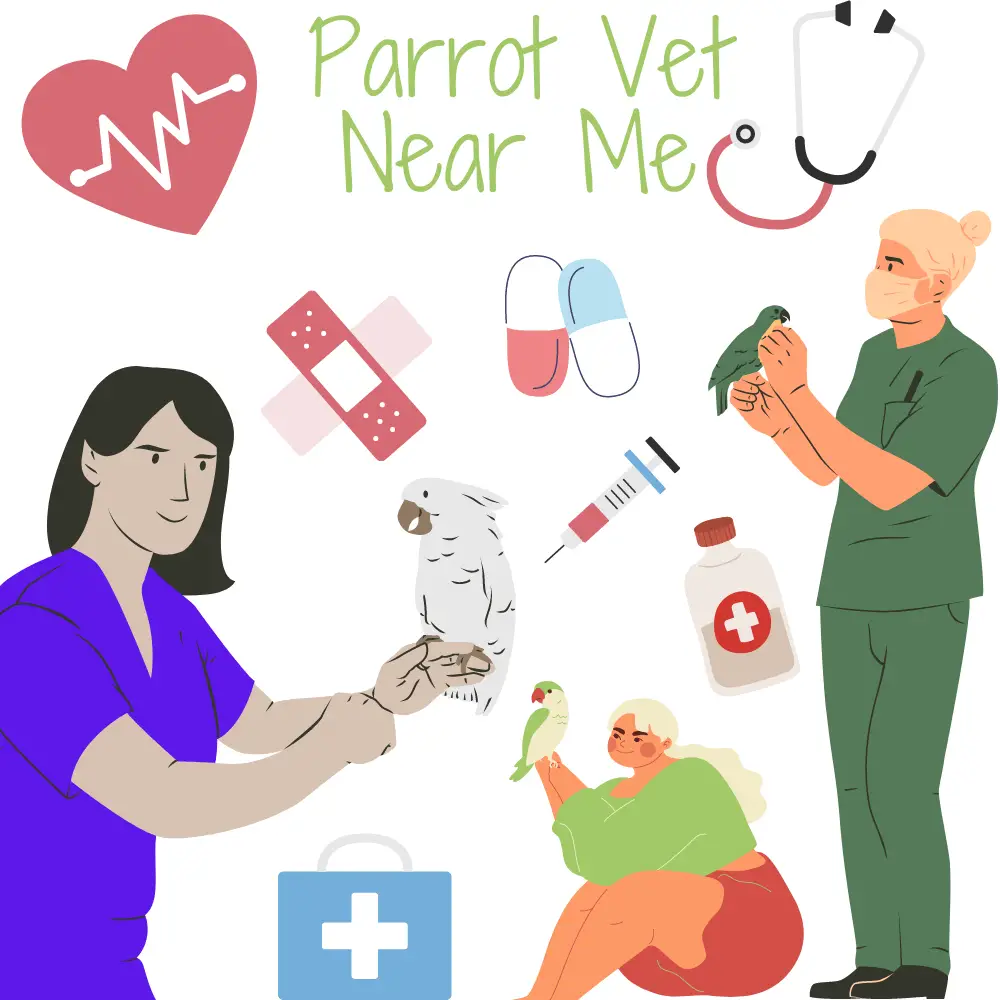
How to care for a parakeet? Parakeet breeding: Parakeets are pleasant and full of life, they make wonderful companions with their multicolored plumage and joyful chirping! Melopsittacus undulatus, or wavy parakeets, are particularly common. They are small with a long tail and feed on seeds. It’s easy enough to take care of them, but they still need a clean environment, suitable food, social interactions, and regular mental stimulation.
Parakeet pet
Choosing a parakeet

Select a trusted breeder. As with any pet, it’s better if it comes from a reputable firm! Look at reviews on the internet and ask the breeder if you can see his birds in order to check the cleanliness of the aviary or cage, the space the birds have and if they look calm and neat. Check that the parakeets are not crammed on the same perches, that their food seems to be fresh and of quality and that they have fruits and vegetables available.
- Check that the parakeets are not crammed on the same perches, that their food seems to be fresh and of quality and that they have fruits and vegetables available.
Spot a bright-eyed parakeet. Check that it has no crusts on the wax (the small outgrowth above the beak) and that its cloaca (by which it defecates) is clean. If it is not, it is because she suffers from digestive problems. Do not choose lethargic birds that remain at the bottom of the cage.
- Select a parakeet that looks happy, vigorous, and healthy. Visit him at different times of the day, as budgies take naps and may look asleep from time to time.

Why not adopt a pair? Parakeets are very sociable, they like to be in a duo or group. If you only take one, you’ll need to spend time with her every day to satisfy her need for companionship.
- If you decide to adopt several birds, there should be only parakeets.
 Take your new pet bird to the vet. Even if he looks fit, sometimes the symptoms of illness are not noticed until an advanced stage and it is better to rely on the expertise of a professional. He will test it for psittacosis, a dangerous bacterium transmissible to humans. as well as for internal and external parasites such as mycoses, salmonellosis, and other types of bacteria.
Take your new pet bird to the vet. Even if he looks fit, sometimes the symptoms of illness are not noticed until an advanced stage and it is better to rely on the expertise of a professional. He will test it for psittacosis, a dangerous bacterium transmissible to humans. as well as for internal and external parasites such as mycoses, salmonellosis, and other types of bacteria.
Prepare the cage
Add a feeder and a bowl of water. It is best to hang them on the top of the cage to prevent droppings from falling into it or spilling.
- If you have several birds, install a feeder for each of them so that the dominant bird cannot prevent others from eating.
Install perches. The best is to choose branches of fruit trees wide enough so that the greenhouses do not make a complete turn by superimposing themselves, about 1 cm in diameter. Apple, pear, plum, or cherry wood is safe for the parakeet and it has abrasive properties that help the claws to file.
- The chopsticks used as perches supplied with the cages are quite unsuitable for parakeets. Their diameter is too narrow for them to stand comfortably in it and they do not bind their claws.
Add Parrot Toys. Parakeets are curious and quick-witted, they need mental stimulation! They particularly appreciate mirrors, bells, and ladders.
- Games are essential for a stimulated and healthy parakeet. If she is too bored, she will make a fuss.
Install the cage in a room where you often find yourself. This way, your parakeet will often have company! Parakeets like to be able to retreat into a corner, and it is better to place the cage against a wall (instead of leaving it exposed on all sides). Avoid installing it near a window or door where there may be drafts and direct sunlight, as budgies are very sensitive to temperature changes.
- Never put a birdcage in your kitchen. The fumes from some oils (and even the coating of some pans) are toxic to parakeets and can make them very sick.
Daily care
Feed it mainly with granules. Although in nature parakeets feed mostly on seeds, these are a source of bacterial infections and can endanger the health and longevity of your parakeet. Bacteria can build up and overwhelm your bird after a while! The parakeet diet should consist of 60% or 70% granules. Birds get used to the granules more or less quickly and may even reject them completely at first; but with the following method, 90% of parakeets adapt to it in two weeks:
- give them seeds only for one hour in the morning and one hour in the evening
- let them eat granules the rest of the time
- often, the 10% of parakeets that have not been converted in two weeks are converted after a brief return to a seed diet.
Embellish your parakeet diet with a mixture of seeds and fresh fruits and vegetables. You can give them cabbage (in small quantities), beetroot, peas, carrots, cooked sweet potato, apple slices, tangerines, lemon (in small quantities), etc. Never give him the same fruits and vegetables two days in a row (even fresh): this way, you will avoid excesses that can occur by ingesting too much of the same food.
- Hang pieces of apples or carrots from the bars. For larger fruits and vegetables, slice them and then put them in your bird’s feeder.
- Most fresh foods are good for parakeets, EXCEPT: avocados, eggplants, seeds, rhubarb, tomato leaves, and potato leaves. Never give them caffeine, chocolate, or alcohol.
Give him treats. Millet branches are usually very popular but do not give them too much (1-2 cm per day), as they tend to make birds fat. Same with budgie candy and oats.
- Millet branches are very useful for training your parakeet to perch on your finger!
Bind yourself with your bird. Parakeets need companionship and you need to be prepared to spend at least 90 minutes a day (not necessarily in a row) interacting with your bird. They can be trained to react to mouth snaps, which stimulates the parakeet well and encourages it to communicate with you!
- If you don’t interact with it regularly enough, your budgie will stop being interested in humans. Two birds will usually bond with each other (regardless of gender) and ignore humans, but by interacting with them, you can be considered part of the group.
- To get closer to your parakeet, you can sing with her, give her baths, and if she seems to drop one of her toys very quickly, pick it up: she is probably trying to play with you.
- Sometimes parakeets feel a little lonely. Talk to her to make her happy.
- If you want her to lift your finger, press her chest with your fingertip and say “go up.” After a while, she will assimilate the order and perhaps say it herself before climbing a ladder or staircase.
Let her out of her cage. Even if it can fly in it, it’s always nice to stretch your wings a little more! Obviously, remember to close the windows, extinguish the candles, and all that. This is where the mouth snaps can become useful if you can make your parakeet understand that they are a sign that she must return to her cage!
- There are other, less obvious elements that can be dangerous for your parakeet. Not only windows: also remove shiny and dangerous objects such as knives, turn off fans, do not let them approach children or animals, etc. The safer the environment, the better.
Make sure she sleeps well. Parakeets sleep about 10 hours a night, most often when it’s dark, but they can take naps during the day as well. Try not to make too much noise when your parakeet is sleeping, even if music or TV are tolerated at low volume.
- Parakeets like to feel protected at night, so put a sheet or towel over the cage.
Advice
- If you are not often at home, adopt two budgies to prevent them from feeling lonely. These very sociable birds normally live in groups of many individuals. When you’re not around, you can put music on them, maybe on a timer: soft music helps the birds get used to a new place.
- Put just enough seeds to cover the bottom of the container. Thus, you will be able to control the amount that your parakeet eats and you will waste less, not to mention that the parakeet will not put it everywhere!
- Take your parakeet to the vet when you acquire it and ask for a summary of his health record. Then take her there at least once a year. If you acquire a new parakeet, do not put it with others until you are sure that it is healthy.
- Prevent her from looking out the window when she is out of her cage. She might want to get out and injure herself against the glass.
- There are many kinds of granules for parakeets with different tastes. You can vary regularly or try several to determine which ones your parakeet appreciates. Some look like rabbit food, some are round and look like seeds, some are powdery, some look like crumbs… Sizes vary, but you can always crush the granules more or less to see what your parakeet prefers.
- You can make a rope mesh in front of the window, build it a kind of “inner aviary” or games to climb outside the cage. Buy her a playground if you can so she can have fun while you go about your business, in the same room!
- If necessary, the spout can be filed with sandpaper, but ask the veterinarian for advice.
- Do not put the music too loud in his presence and do not make sudden movements.
- Never let your parakeet go outside!
Warnings
- After harvesting, the seeds are usually stored in silos where rats eat and relieve themselves. Even if they are then washed, there are still bacterial residues that cannot be removed either by freezing or microwaves.
- If your parakeet takes a bath, then dry it with a towel. Do not let it get wet after 7 pm so that it is dry before going to sleep.
- Never let your parakeet get close to cats or dogs, even if they are adorable. They could kill her: it’s in their instincts.
- Before putting a branch in the cage of your parakeet, check that it comes from a tree that is not toxic to it.
- The resin of evergreen trees is toxic to the majority of tropical birds, so don’t put your parakeet in the same room as the Christmas tree! She must not even be able to smell it. Be careful, she can be attracted by the decorations!
- Birds always hide their diseases so they don’t look vulnerable to predators, so be very careful if your parakeet behaves unusually. When symptoms appear, it is because she is already very sick: go see a veterinarian immediately. Birds have a high metabolism and their health can deteriorate very quickly.
- Be careful not to let your parakeet escape: trim its wings, inform your family, place screens in front of doors and windows… If a parakeet escapes, there is a good chance that it will die because of confusion and sun exposure.
- If one of your budgies settles in a nest, don’t worry: it is probably laying eggs. Do not disturb it to avoid breaking the eggs.




















